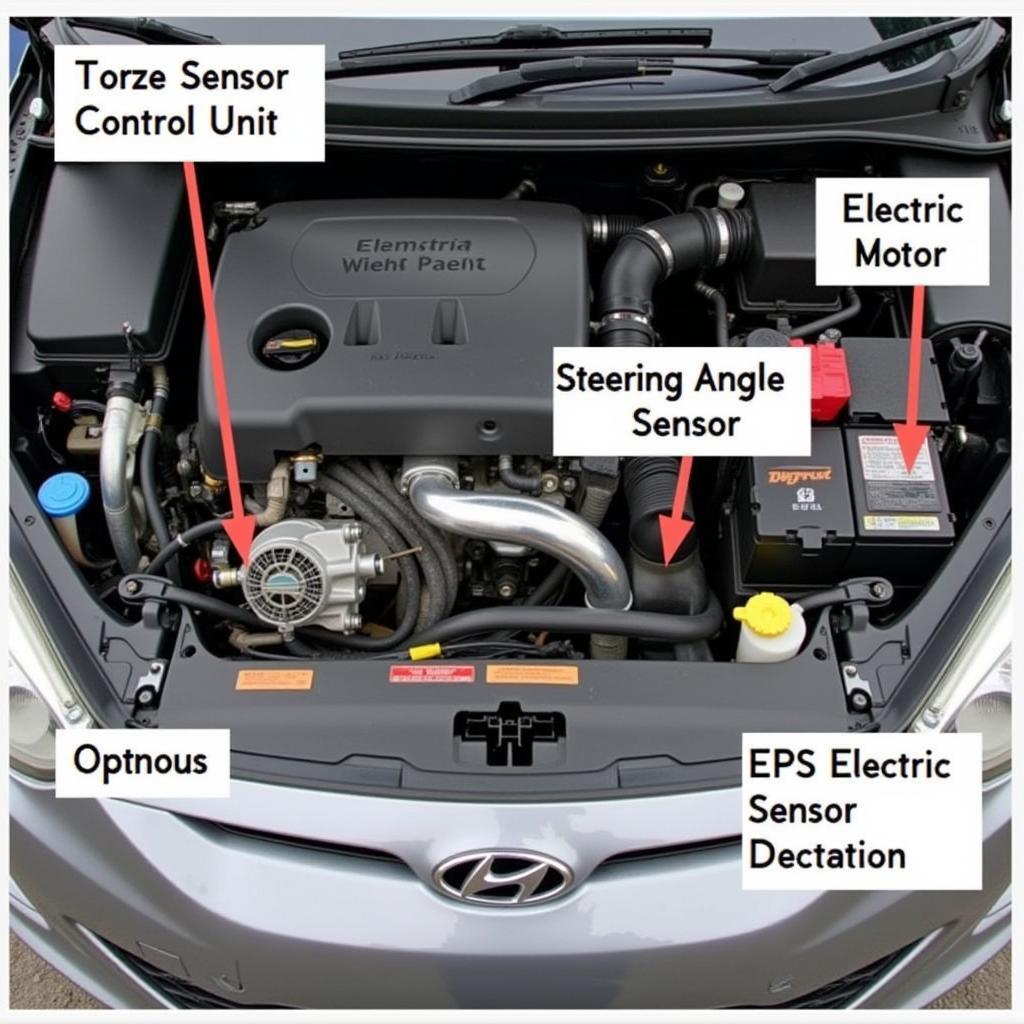A vacuum leak can cause a whole host of problems in your car, from rough idling to reduced fuel economy. Knowing How Do You Fix A Vacuum Leak In Your Car is essential for any car owner. This article will guide you through the process of diagnosing and fixing a vacuum leak, whether you’re a seasoned mechanic or a DIY enthusiast.
Finding and fixing a vacuum leak isn’t always easy, but with a little patience and the right tools, you can get your car running smoothly again. We’ll cover everything from the basics of vacuum systems to advanced troubleshooting techniques. If your car’s computer is giving you trouble, check out how much does it cost to fix a car computer for more information.
Understanding Your Car’s Vacuum System
Your car’s vacuum system is a network of hoses and components that utilize negative pressure (vacuum) created by the engine’s intake manifold to power various systems, including:
- Brake Booster: Provides power assistance for braking.
- Power Steering Assist (some vehicles): Helps reduce steering effort.
- EGR Valve (Exhaust Gas Recirculation): Controls emissions.
- HVAC Controls: Operates vents, blend doors, and other climate control functions.
A leak in this system disrupts the carefully balanced pressure, causing various performance issues. You might want to learn how much does it cost to fix computer of car if the issues persist.
Common Symptoms of a Vacuum Leak
A vacuum leak can manifest in a variety of ways, and recognizing these symptoms is the first step towards fixing the problem. Common signs include:
- Rough Idle: The engine runs unevenly at idle.
- High Idle Speed: The engine revs higher than normal at idle.
- Hissing Sounds: A noticeable hissing sound coming from the engine bay.
- Decreased Fuel Economy: You’re filling up the tank more often.
- Check Engine Light: The dreaded check engine light illuminates.
- Hard Brake Pedal: The brake pedal feels stiff and requires more effort.
“A simple hissing sound can be the first clue to a costly problem if ignored. Don’t underestimate the importance of a properly functioning vacuum system,” says John Miller, a certified automotive technician with over 20 years of experience.
Locating the Leak: A Step-by-Step Guide
Now that you know the symptoms, here’s how to pinpoint the leak:
- Visual Inspection: Carefully examine all vacuum hoses for cracks, holes, dry rot, or loose connections. Pay close attention to areas where hoses connect to components.
- The “Carb Cleaner” Method: With the engine running, carefully spray carb cleaner around potential leak areas. If the idle speed changes when you spray near a specific spot, you’ve likely found the leak. Caution: Carb cleaner is flammable, so exercise extreme caution.
- Smoke Test: A smoke test involves introducing smoke into the vacuum system to pinpoint leaks. This is a more advanced technique best left to professionals.
How to Fix a Vacuum Leak
Once you’ve located the leak, the fix is often straightforward:
- Replace Hoses: If the leak is in a hose, simply replace it with a new one of the same diameter and length.
- Tighten Connections: Sometimes, the leak is just a loose connection. Tighten any loose clamps or fittings.
- Repair Damaged Components: If the leak is in a component like the intake manifold gasket, it may need to be repaired or replaced.
“A small vacuum leak can quickly snowball into a bigger problem. Addressing it promptly can save you time and money in the long run,” advises Sarah Chen, an automotive engineer specializing in engine performance.
If your Hyundai isn’t starting and you see a “Check ESC” message, here’s a helpful resource: how to fix check esc hyundai car not starting.
Preventing Future Vacuum Leaks
Regular maintenance can help prevent vacuum leaks. Inspect your vacuum hoses periodically, especially during routine maintenance like oil changes. Replacing old and brittle hoses before they fail is a good preventative measure. For more advanced car repairs, you might consider giving instruction to machine to fix your car. Or if you’re looking for specific Impala repairs, check out 205 impala fix my car.
Conclusion
Fixing a vacuum leak in your car is a manageable task, even for DIYers. By understanding the symptoms, knowing how to locate the leak, and following the repair steps, you can get your car back in top shape. Don’t hesitate to contact us at AutoTipPro at +1 (641) 206-8880 or visit our office at 500 N St Mary’s St, San Antonio, TX 78205, United States, for assistance with your car’s vacuum system or any other automotive issue.






Leave a Reply